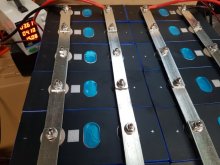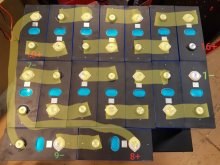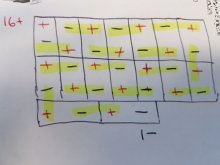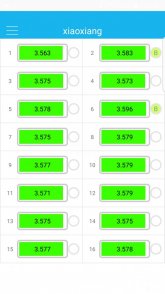I thought I would make a post about my new Foshan SNADI / SNAT all in one.
Looking at inverters, the options are high frequency and low frequency, and of the low freqency they tend to be either elongated or rectangular, with or without an solar charger.
Whilst many have posted their wall mounted systems with [ batteries / switches / fuses /step down converters / MPPT / Inverter / battery indicator ] the appeal of an All in one is price and compact size.
I found several manufacturers on Alibaba and Camille from Foshan SNAT has been my sales rep. I was able to order a custom 5000W AC 48V inverter, with 60A MPTT charging as well as AC charging.
The unit was customized to the EVE280Ah LiFePO4 spec sheet, with the low voltage cutoff at 44.8V (5% SOC)
I was very happy that they were willing to customize one single unit order to 50Hz 240V (whereas other vendors sell 220V).
Here are the in progress shots Foshan SNAT sent me
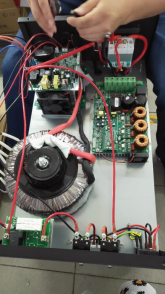
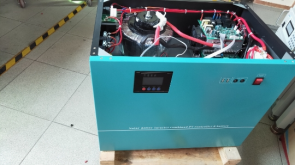


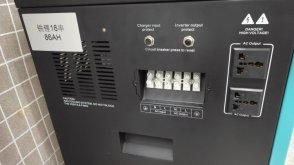
I chose mine with no battery, they offer smaller size inverters, smaller MPPT and 2.2kWh and 4.4kWh battery options

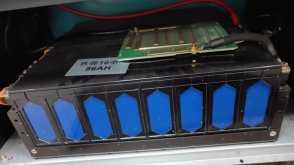
And here is mine with the cover removed
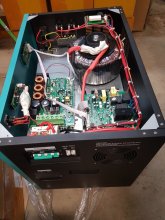
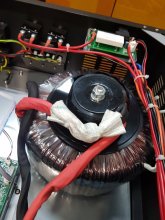
Unfortunatly I could only fit 2 rows of 7 EVE280Ah cells inside the battery compartment, the case has handle cutouts and an external battery terminals cutout which prevent 8 adjacent cells.
Moving cells 8+9 and the BMS to the side, everything fits, and the rear door latches closed !

It's not mandatory to install a battery internally, and as there are internal battery cables and external battery terminals you can have 2 batteries as long as they are identical.
The inverter mode supports AC Grid priority, Energy saving mode and Battery priority mode.
In grid priority mode the battery charge rate can be set at 20/40/60/80/100%, with 1200W max.
Camille pointed out that in Grid priority mode the All in one acts as a UPS and as such if drawing a 5000W load, the input would need to be wired by an electrician to the mains power. Personally I use a standard 240w 10A socket, just for battery charging, and then switch to Battery Priority.
With the inverter at about 2100W output, the fan is near silent, about the noise level of your car fan set at "1". Inverter efficiency appears to be 90-92%.
I paid $665 without a battery.
66kg in a wooden crate.
48V 5kW low freq inverter charger
60A MPPT
Output 240V 50Hz AC
Looking at inverters, the options are high frequency and low frequency, and of the low freqency they tend to be either elongated or rectangular, with or without an solar charger.
Whilst many have posted their wall mounted systems with [ batteries / switches / fuses /step down converters / MPPT / Inverter / battery indicator ] the appeal of an All in one is price and compact size.
I found several manufacturers on Alibaba and Camille from Foshan SNAT has been my sales rep. I was able to order a custom 5000W AC 48V inverter, with 60A MPTT charging as well as AC charging.
The unit was customized to the EVE280Ah LiFePO4 spec sheet, with the low voltage cutoff at 44.8V (5% SOC)
I was very happy that they were willing to customize one single unit order to 50Hz 240V (whereas other vendors sell 220V).
Here are the in progress shots Foshan SNAT sent me





I chose mine with no battery, they offer smaller size inverters, smaller MPPT and 2.2kWh and 4.4kWh battery options


And here is mine with the cover removed


Unfortunatly I could only fit 2 rows of 7 EVE280Ah cells inside the battery compartment, the case has handle cutouts and an external battery terminals cutout which prevent 8 adjacent cells.
Moving cells 8+9 and the BMS to the side, everything fits, and the rear door latches closed !

It's not mandatory to install a battery internally, and as there are internal battery cables and external battery terminals you can have 2 batteries as long as they are identical.
The inverter mode supports AC Grid priority, Energy saving mode and Battery priority mode.
In grid priority mode the battery charge rate can be set at 20/40/60/80/100%, with 1200W max.
Camille pointed out that in Grid priority mode the All in one acts as a UPS and as such if drawing a 5000W load, the input would need to be wired by an electrician to the mains power. Personally I use a standard 240w 10A socket, just for battery charging, and then switch to Battery Priority.
With the inverter at about 2100W output, the fan is near silent, about the noise level of your car fan set at "1". Inverter efficiency appears to be 90-92%.
I paid $665 without a battery.
66kg in a wooden crate.
48V 5kW low freq inverter charger
60A MPPT
Output 240V 50Hz AC
Last edited:



